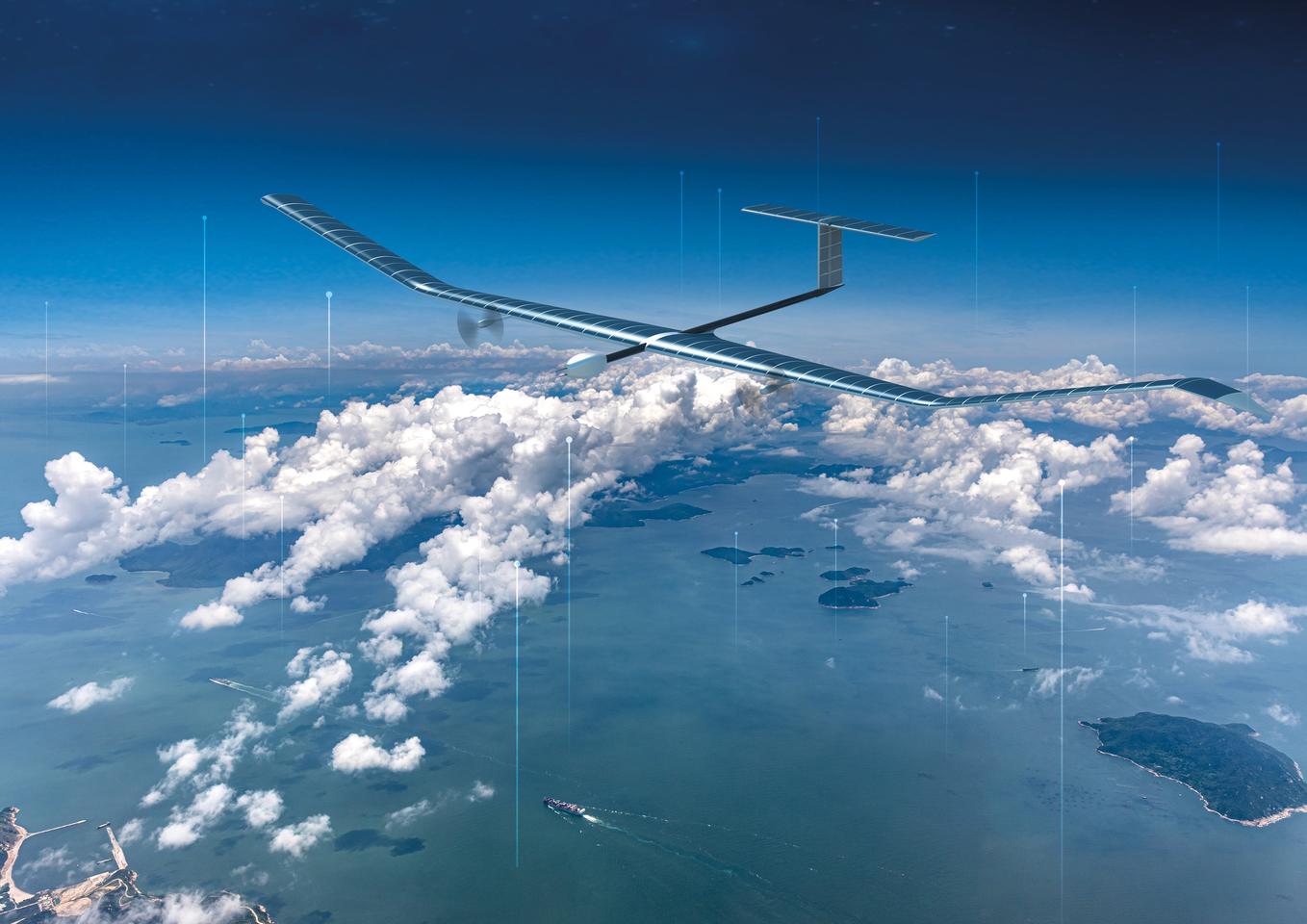The remarkable Zephyr is a stratospheric UAV designed to fly ultra-long endurance missions acting as a solar-powered observation and comms platform. In its latest test, it sailed past its old endurance record two weeks ago, and may still be up there.
With a broad wingspan of 25 m (82 ft), the Zephyr weighs less than 75 kg (165 lb), making it remarkably light for its size. It’s fully electric, with a pair of efficient motors driving two propellers out along the wings, and its spindly airframe looks a lot like a glider. About 24 kg (53 lb) worth of advanced Ampirus lithium-ion batteries dole out energy as required, but the Zephyr’s wings are also covered in gallium-arsenide solar cells.
The sun will shine on these panels all day; the Zephyr is designed to fly well above the clouds and other conventional aircraft, with a sweet spot around 70,000 ft. Indeed, last year, this mighty UAV set a new altitude record for unmanned aerial systems, reaching 76,100 ft over Arizona.
Originally built by QinetiQ and now owned by Airbus, the Zephyr platform has been setting records for more than a decade now. Essentially, it’s designed to fly autonomously for … well, as long as you need it to. Airbus doesn’t advertise an endurance limit on this machine at all, simply saying it can fly continuously for months at a time, acting more or less like a geostationary satellite, but at much lower cost. While it’s up there, it can surveil a 20 x 30-km (12.4 x 18.6-mile) slice of ground with all sorts of instruments, or provide telecommunications coverage equivalent to 250 cell phone towers – depending on what payload it’s carrying.

Christian Otto / Airbus Defence and Space
Its previous endurance record was set in 2018, at just three minutes short of 26 days without refueling – but it has now obliterated that mark. Its latest test was launched on June 15 by a US Military cross-functional team, and in a press release issued late last week, the team said it had reached 36 days aloft, and was still flying over the Yuma Proving Ground in Arizona.
According to the US Army, this Zephyr test also knocked off “a number of firsts, including its first flight into international airspace, first flight over water, longest continuous flight utilizing satellite communication controls, and the farthest demonstration from its launch point, while carrying a commercial, off-the-shelf payload.”
On Friday, an Army spokesperson told Breaking Defense that the team was waiting for “ideal” weather conditions before bringing it down to Earth, and there’s been no official word since. So to the best of our knowledge, as far as we know, the Zephyr might still be up there.
It’ll need to come down soon – not because it’s running out of power, but because there’s another test scheduled to launch in the next couple of weeks, over the Pacific Ocean. On this next sortie it’ll “demonstrate a new Army Futures Command-developed prototype payload over multiple combatant commands.”
Source: US Army
Source of Article